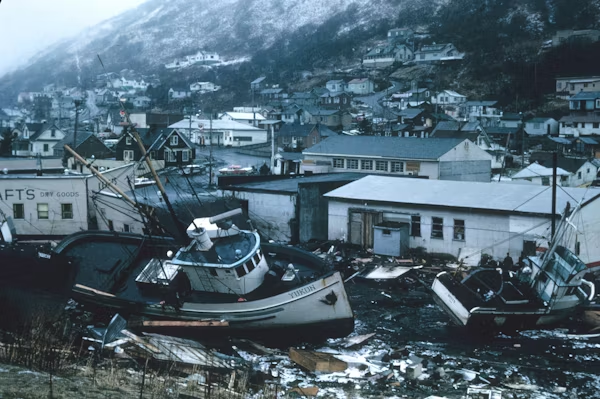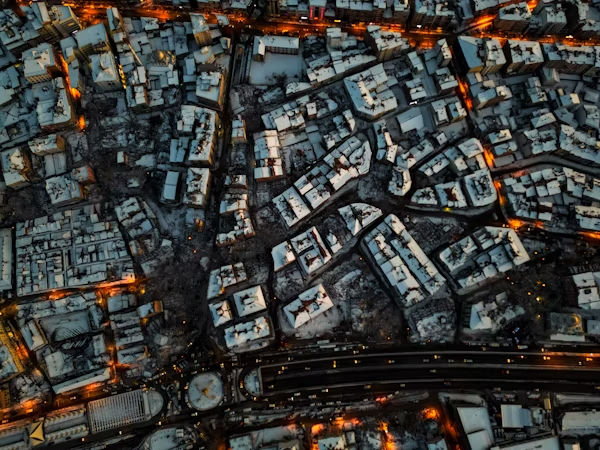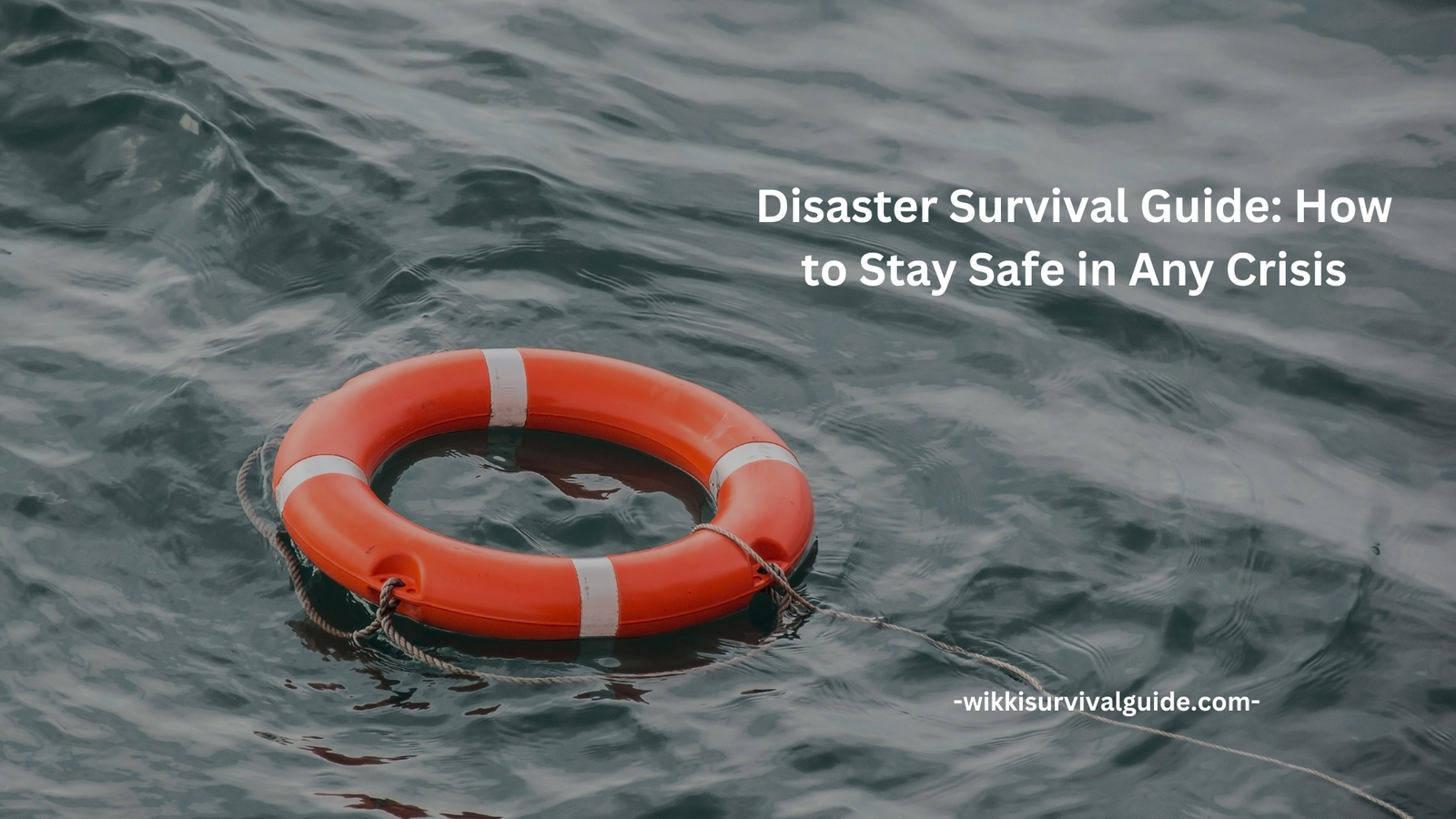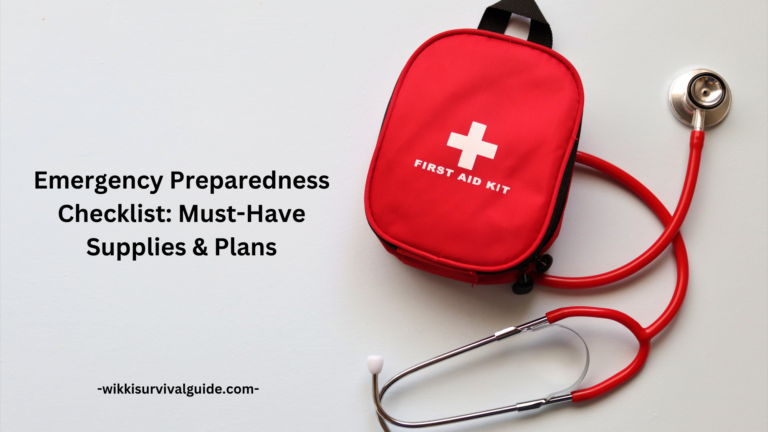Introduction
Disasters can strike at any time, whether it’s a natural event like an earthquake or hurricane, or a man-made crisis like a power outage or terrorist attack. Being prepared and knowing how to respond can make all the difference in ensuring your safety and the safety of your loved ones. In this comprehensive disaster survival guide, we’ll cover essential tips, strategies, and steps to help you stay safe in any crisis.

Understanding Different Types of Disasters
Before diving into survival strategies, it’s important to understand the types of disasters you might face:
- Natural Disasters: Earthquakes, hurricanes, tornadoes, floods, wildfires, and tsunamis.
- Man-Made Disasters: Power outages, chemical spills, terrorist attacks, and nuclear incidents.
- Health Crises: Pandemics, epidemics, and outbreaks of infectious diseases.
Each type of disaster requires specific preparation and response strategies.

Essential Disaster Survival Tips
1. Create an Emergency Plan
Having a clear plan is the foundation of disaster survival.
- Family Communication Plan: Decide how you’ll contact each other if separated.
- Meeting Points: Designate safe locations to meet in case of evacuation.
- Emergency Contacts: Keep a list of important phone numbers, including local emergency services.
2. Build an Emergency Kit
An emergency kit is a must-have for any disaster. Here’s what to include:
- Water: At least one gallon per person per day for three days.
- Food: Non-perishable items like canned goods, granola bars, and dried fruits.
- First Aid Kit: Bandages, antiseptic wipes, medications, and a first aid manual.
- Tools: Flashlight, batteries, multi-tool, and a battery-powered radio.
- Clothing: Warm clothes, sturdy shoes, and rain gear.
- Important Documents: IDs, insurance policies, and emergency plans in a waterproof container.
3. Stay Informed
Knowledge is power during a crisis.
- Emergency Alerts: Sign up for local emergency alerts and notifications.
- Weather Updates: Monitor weather forecasts and warnings.
- News Sources: Stay tuned to reliable news outlets for updates.
4. Know Your Evacuation Routes
In some disasters, evacuation may be necessary.
- Plan Multiple Routes: Identify primary and alternate routes in case roads are blocked.
- Local Shelters: Know the locations of nearby shelters.
- Transportation: Arrange for transportation if you don’t have a car.
5. Secure Your Home
Prepare your home to withstand disasters.
- Earthquake-Proofing: Secure heavy furniture and appliances to walls.
- Flood Protection: Install sump pumps and elevate electrical systems.
- Fire Safety: Clear dry leaves and debris from around your home.

Disaster-Specific Survival Strategies
1. Earthquakes
- Drop, Cover, and Hold On: Protect yourself under sturdy furniture during shaking.
- Stay Indoors: Avoid going outside until the shaking stops.
- Check for Hazards: Be cautious of broken glass, gas leaks, or downed power lines.
2. Hurricanes
- Evacuate if Advised: Follow local authorities’ instructions.
- Secure Windows: Use storm shutters or plywood to protect windows.
- Stay Indoors: Avoid going outside during the storm.
3. Floods
- Move to Higher Ground: Avoid walking or driving through floodwaters.
- Turn Off Utilities: Shut off electricity, gas, and water if instructed.
- Avoid Contaminated Water: Floodwater can carry dangerous debris and pathogens.
4. Wildfires
- Create Defensible Space: Clear vegetation around your home.
- Evacuate Early: Don’t wait for mandatory evacuation orders.
- Protect Your Lungs: Wear a mask to avoid inhaling smoke.
5. Power Outages
- Use Flashlights: Avoid candles to reduce fire risk.
- Keep Fridge Closed: Food will stay cold longer if the fridge remains closed.
- Unplug Electronics: Protect devices from power surges when electricity is restored.
6. Pandemics
- Practice Hygiene: Wash hands frequently and use hand sanitizer.
- Wear Masks: Follow public health guidelines for mask-wearing.
- Social Distancing: Avoid crowded places and maintain physical distance.
Mental and Emotional Preparedness
Disasters can take a toll on mental health. Here’s how to stay emotionally resilient:
- Stay Calm: Focus on what you can control and take deep breaths.
- Stay Connected: Reach out to friends and family for support.
- Limit Media Exposure: Avoid excessive exposure to distressing news.
- Practice Self-Care: Engage in activities that bring you comfort and relaxation.
Post-Disaster Recovery
Once the immediate danger has passed, recovery begins.
- Assess Damage: Check your home for structural damage or hazards.
- Contact Loved Ones: Let family and friends know you’re safe.
- Seek Assistance: Reach out to local authorities or relief organizations for help.
- Document Losses: Take photos and keep records for insurance claims.
Conclusion
Disasters are unpredictable, but being prepared can significantly improve your chances of staying safe. By following this disaster survival guide, you’ll have the knowledge, tools, and strategies to handle any crisis with confidence.
- Create an emergency plan and build a well-stocked emergency kit.
- Stay informed about potential disasters and evacuation routes.
- Secure your home and know disaster-specific survival strategies.
- Prioritize mental and emotional well-being during and after a crisis.
- Take steps for post-disaster recovery and rebuilding.
FAQs
1. What’s the most important item in an emergency kit?
Water is the most critical item, as you can only survive a few days without it.
2. How can I stay informed during a disaster?
Sign up for local emergency alerts and monitor reliable news sources.
3. What should I do if I’m caught in a flood?
Move to higher ground and avoid walking or driving through floodwaters.
4. How can I prepare my home for an earthquake?
Secure heavy furniture and appliances to walls and create a safe space under sturdy furniture.
5. What’s the best way to stay calm during a disaster?
Focus on your breathing, prioritize tasks, and remind yourself that preparation will help you get through it.
By following this disaster survival guide, you’ll be ready to face any crisis with confidence. Stay safe, stay prepared, and remember that knowledge and preparation are your best tools in an emergency.




Leave a Comment